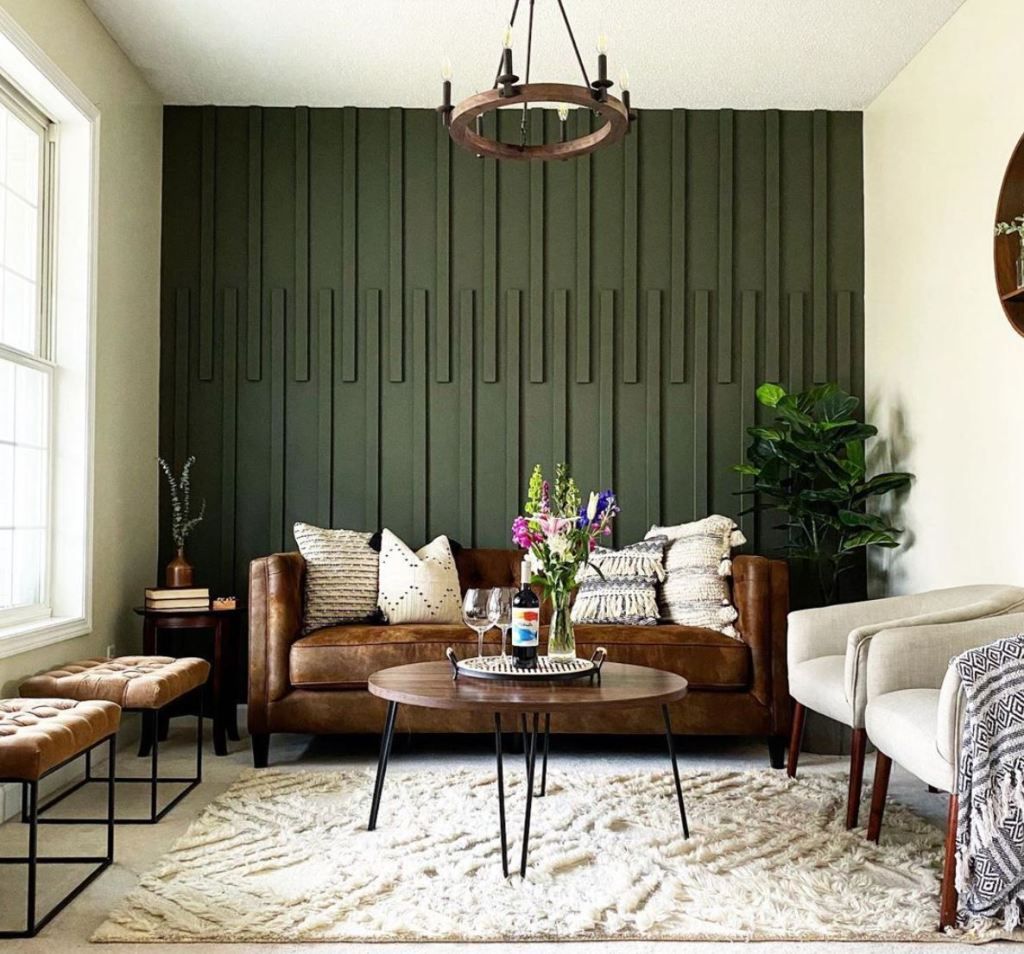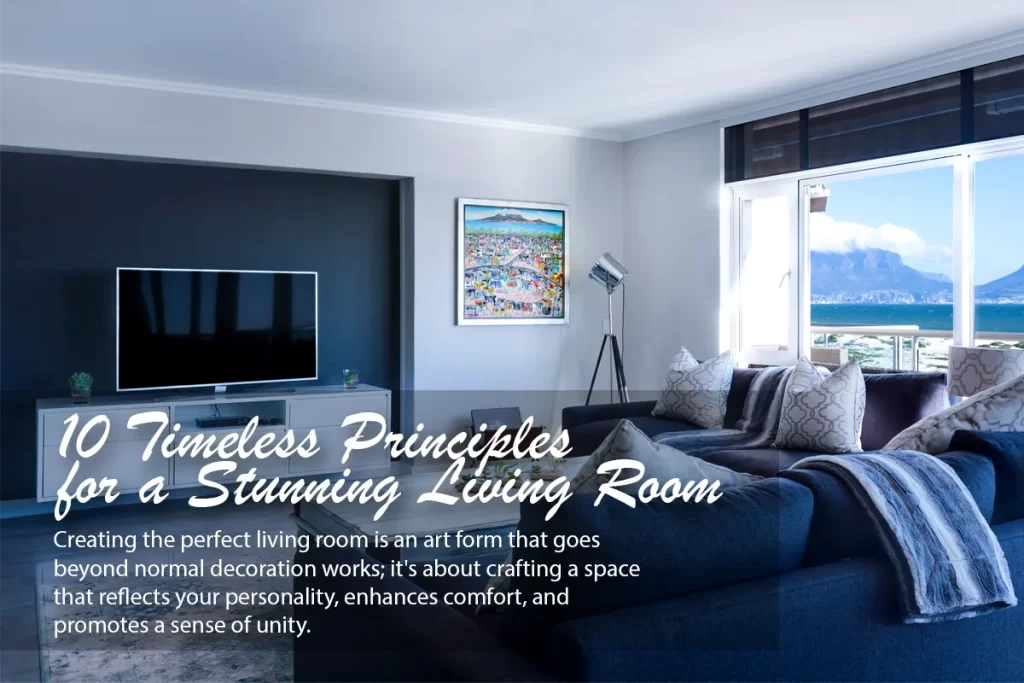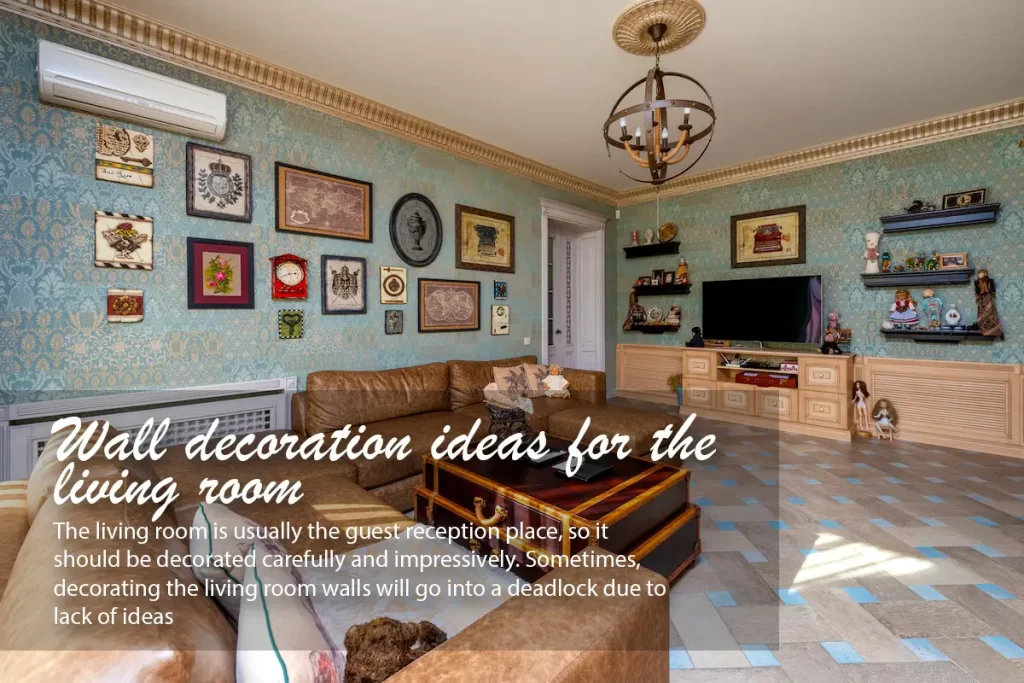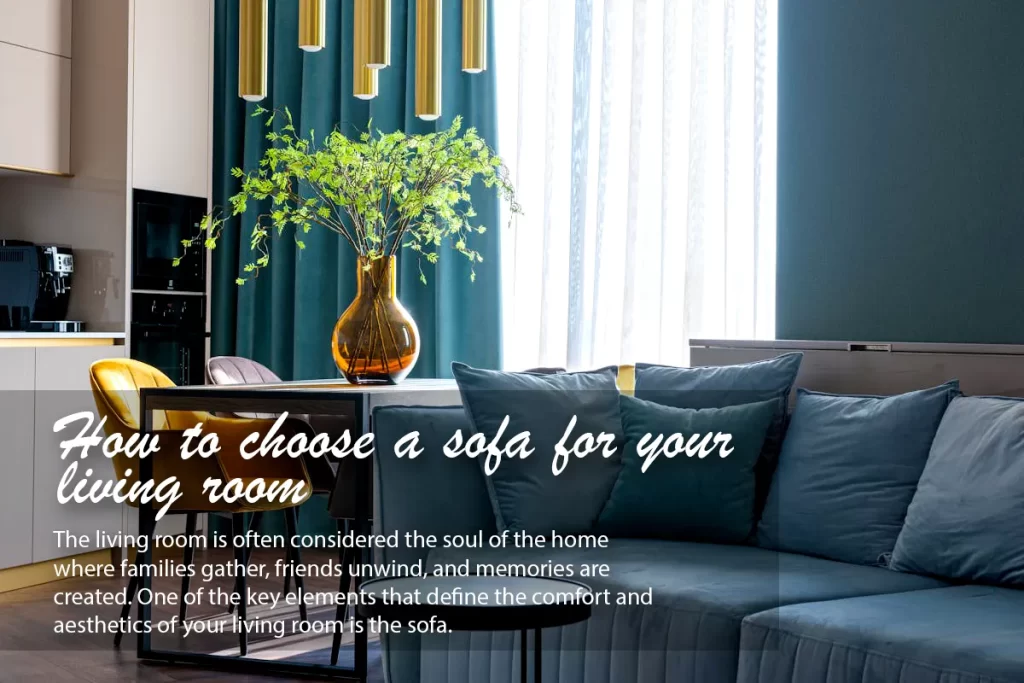Creating the perfect living room is an art form that goes beyond normal decoration works; it’s about crafting a space that reflects your personality, enhances comfort, and promotes a sense of unity. Whether you’re starting from scratch or looking to improve your current living room, understanding the key principles of living room design is really important. In this comprehensive guide, we’ll explore 10 timeless principles that will help you transform your living room into a stunning and functional space.
Balance of positive and negative spaces in your living room
Achieving space balance is fundamental in living room design. Balance can be achieved through the distribution of positive and negative spaces in a room, ensuring that no one side feels heavier than the other.
Logical Furniture Placement
Careful consideration of furniture placement can significantly impact the functionality and flow of your living room. You should arrange furniture to encourage natural conversation and ensure that pathways are clear. A focal point, such as a fireplace, television, mirrors, picture, or a stunning piece of artwork, can guide the arrangement of your furniture, creating a cohesive and inviting space.
principles of color for a stunning living room design

Colors play a crucial role in setting the tone for your living room. Let’s choose a color palette that resonates with your style and matches the overall theme of your home. You also need to consider utilizing a mix of neutral tones and accent colors to create depth and visual interest. A well-coordinated color scheme contributes to a cohesive and aesthetically pleasing design.
Lighting Design
Lighting is one of the key principles in living room design. It can transform the vibe of your living room. You should let natural light come into the living room through large windows. it not only makes your room alive but also improves your health. Besides the natural light, a system of electric lamps at night is also important. It should provide enough and even light for the living room. Moreover, you can also use lighting as a decorative element.
Texture and Pattern principles for living room design

If you incorporate a variety of textures and patterns, it will add richness and dimension to your living room. Or, you can try some mixed materials such as wood, metal, and fabric to create visual interest. You can try any pattern and texture if you want but you have to ensure the right balance to create a visually appealing and comfortable environment.
Personalization and Statement Pieces
Let’s show your personality in the living room by adding statement pieces and personal elements. Whether it’s a unique piece of artwork, a family heirloom, or a bold accent wall, these elements make the space show your personality. A balance between functionality and personalization is necessary to create a space that feels both familiar and stunning.
principles about Scale and Proportion for living room design
For a well-designed living room, you should pay attention to the scale and proportion of furniture and decor items. You need to ensure that they are logically sized for the space, avoiding overcrowding or creating an empty feel. If you can maintain a sense of proportion, it will create visual harmony and make the room feel inviting and balanced.
movement flow principles in your living room design
For every room and space including the living room, the flow of movement within the space is really important. You have to carefully organize furniture arrangements to facilitate easy traffic patterns and ensure that there’s a logical progression from one area to another. The placement of doors and windows should be considered when arranging furniture to optimize both aesthetics and functionality.
Multifunctional Furniture utilization
When you live in a small apartment leading to the limited space for the living room, you can optimize the space by maximizing furniture functionality. Let’s invest in multifunctional furniture that serves more than one purpose. I can provide you with some ideas such as hidden storage, convertible sofas, and nesting tables… All of them are excellent choices to optimize space and enhance the versatility of your living room.
Maintain a Clutter-Free Environment
Clutter is a big enemy of your living room design. It can break your effort of making a stunning living room. Therefore, you should consider storage solutions, such as built-in shelves or stylish baskets, to keep essentials organized and maintain a clean, inviting atmosphere.
Conclusion
Somebody says that designing the perfect living room is the work of an interior designer, and you have to pay for that. However, if you don’t want to waste that money and are interested in interiors, you can do it by yourself. By incorporating these 10 timeless principles into your living room design, you’ll create a space that not only captivates the eye but also fosters comfort and harmony. You should remember that the key to a stunning living room lies in the careful consideration of balance, color, lighting, and personalization. If you master these principles, you’ll be well on your way to crafting a living room that truly reflects your style and enhances your overall living experience.



I’m so in love with this. You did a great job!!
May I request that you elaborate on that? Your posts have been extremely helpful to me. Thank you!
You’ve been great to me. Thank you!
You’ve the most impressive websites.
Thank you for sharing this article with me. It helped me a lot and I love it.
Can you write more about it? Your articles are always helpful to me. Thank you!
Sustain the excellent work and producing in the group!
The articles you write help me a lot and I like the topic
May I request more information on the subject? All of your articles are extremely useful to me. Thank you!
Thank you for your articles. They are very helpful to me. May I ask you a question?
Thank you for your articles. They are very helpful to me. May I ask you a question?
I enjoyed reading your piece and it provided me with a lot of value.